

A ship is a complex structure from inside with several small and enclosed spaces. Many of these enclosed spaces are used for installing some machinery or for storing machine parts or workshop equipment.
A ship has a matrix of pipelines, which runs through each of its parts, including enclosed spaces. An enclosed space can be used for several reasons; however, the main issue arises when one has to enter these enclosed spaces in order to do some repairing work or for cleaning purposes.
Unfortunately, numerous incidents involving personal injury, loss of lives, enclosed space casualties have been reported off late due to failure to follow correct entry procedures.
Even though shipping companies issue warnings about the dangers and provide relevant training, too many seafarers are still dying or are severely injured.
Related Read: New FREE eBook: A Pocket Guide To Safe Confined Space Entry On Ships
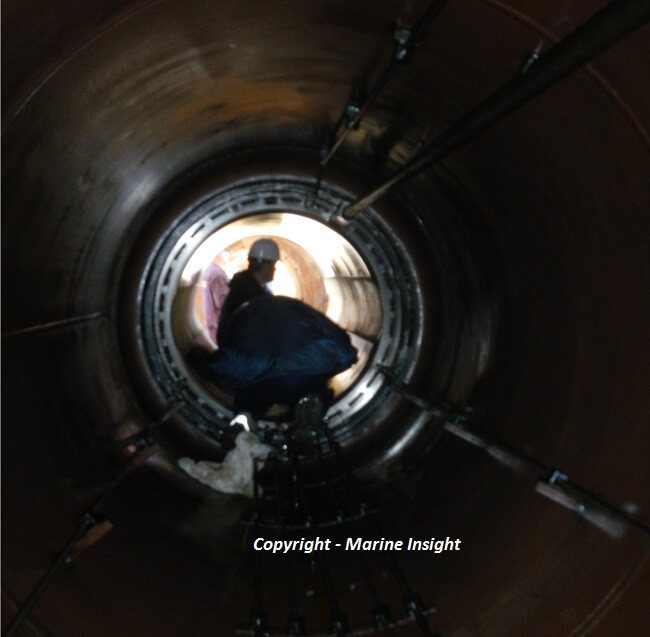

An enclosed space is a space that is not used for day to day activity and which has any of the following characteristics:
1. Limited opening for entry and exit
2. Inadequate ventilation
3. Is not designed for continuous worker occupancy
The presence of any one of the characteristics as stated above can make space an enclosed space. A ship-specific list should be available to identify all enclosed spaces on board and should be displayed in public spaces. The most common confined spaces onboard ships are cargo holds, chain lockers, cofferdams, water tanks, void spaces, duct keels, fuel tanks, engine crankcases, exhaust and scavenge receivers.
Related Read: 11 Important Points To Consider While Cleaning Tanks On Ships
Any area on the ship that has been left closed for any length of time without ventilation must be considered dangerous. Changes in the environment of a space that is not labelled unsafe can also make space unsafe, for example, failure of fixed ventilation or the migration of hazardous vapours from an adjacent hazardous space.
It is best practice not to enter a dangerous space, however, onboard crew members have to enter enclosed spaces for a number of reasons including routine inspection of tanks (ballast tanks, DB tanks), checking if a tank is dry before loading, cleaning of tanks or holds, maintenance including painting, repairing, etc.
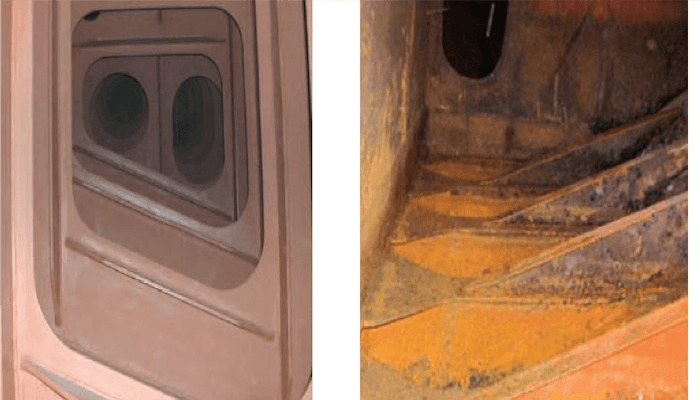

1. Lack of oxygen – the acceptable range of oxygen in an enclosed space is between 19.5% to 23.55. Oxygen in any compartment can reduce due to many factors- rusting of steel parts is the most common one. We all know that rusting is nothing but the process of oxidation-thus oxygen is consumed. Oxygen can also be consumed by activities like hot work, welding or the occurrence of fire.
Related Read: Practical Tips for Safe Gas Welding and Cutting Operations On Ships
Inert gases entering the space can also deplete the oxygen content. The remaining traces from discharged cargoes such as iron ore, coal can absorb oxygen.
2. Hazardous vapours– The presence of toxic vapours can make space deadly even if there is no lack of oxygen or the compartment is oxygen-enriched. A person may suffer from eye irritation, headache or even become unconscious if he/she inhales toxic gases. A higher concentration of toxic gases can also cause death.
3. Leakage of hazardous materials from adjacent spaces.
4. Insufficient/no ventilation – there could be high chances of the presence of toxic gases or absence of oxygen, both cases being lethal for man entry.
5. Restricted space– restricted or limited space in any compartment can make rescue attempts from such chambers difficult and challenging. Personnel should understand the layout of an enclosed space before attempting entry.
6. Inadequate lighting.
7. Personal injury due to slips, trips, and fall.
Because of zero ventilation, these enclosed places generate and store toxic gases which are either produced from chemicals stored in the place or leakage from pipelines. If a person enters such a place without taking precautions, he or she may suffer unconsciousness and sometimes even death.
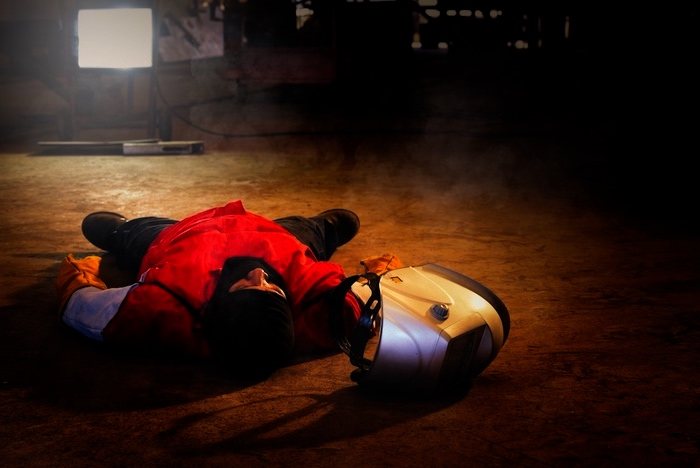

There have been many accidents in the maritime industry related to enclosed spaces that have not only caused health hazards but also have costed their lives.
In spite of stringent checklists, permits to work, our fellow seafarers are still losing their lives.
Below we have enumerated some of the main issues that are often overlooked.
Related Read: Enclosed Space Ship Safety Rule Enters Into Force
To prevent such unfortunate circumstances, there is a proper procedure that needs to be followed for the safety and wellness of the person entering the enclosed space.
The following are the points that need to be followed before entering an enclosed space:
Related Read: How Deck Officers Should Do Risk Assessment On Ships?
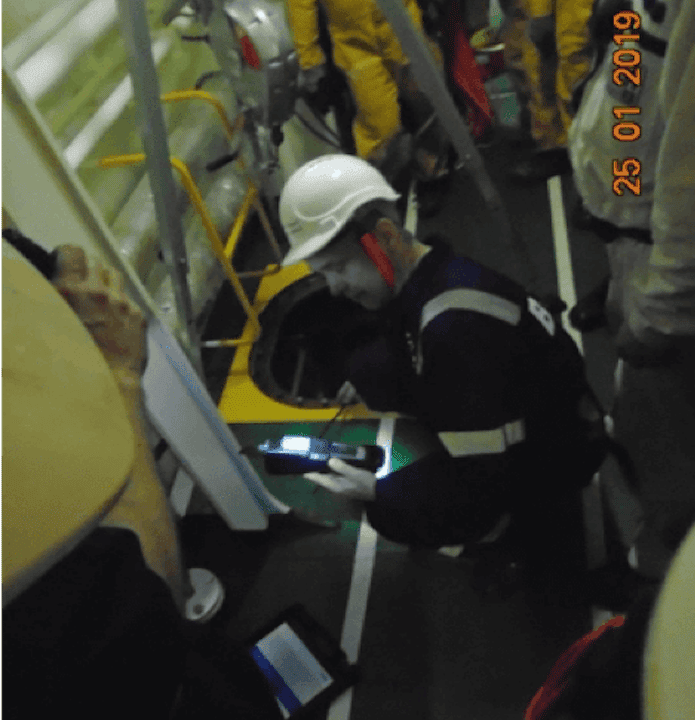

| METHANE – RISES TO THE TOP AS IT IS LIGHTER THAN AIR |
| CARBON MONOXIDE– STAYS IN THE MIDDLE AS IT IS THE SAME WEIGHT AS AIR |
| CARBON DIOXIDE – SINKS TO THE BOTTOM AS IT IS HEAVIER THAN AIR |
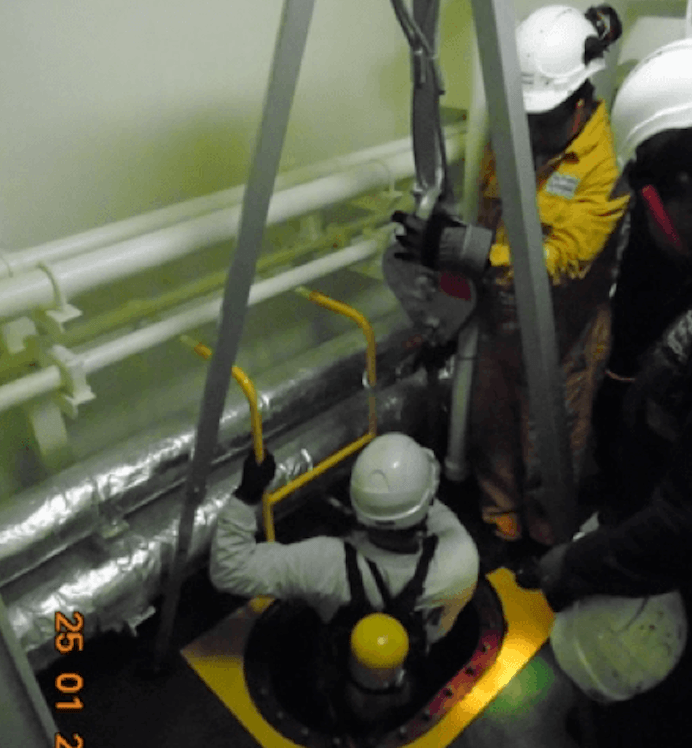

Related Read: How to Rescue a Person from a Confined Space on a Ship?


The above-mentioned procedure is extremely important to enter an enclosed space. These points are imperative to risk any crew member’s life while entering a confined space.
It is of paramount importance that enclosed space entry drills are carried out on board. Drills should be realistic and effective and must involve the active participation of all crew members.
Related Read: 10 Important Safety Drills and Training Procedures
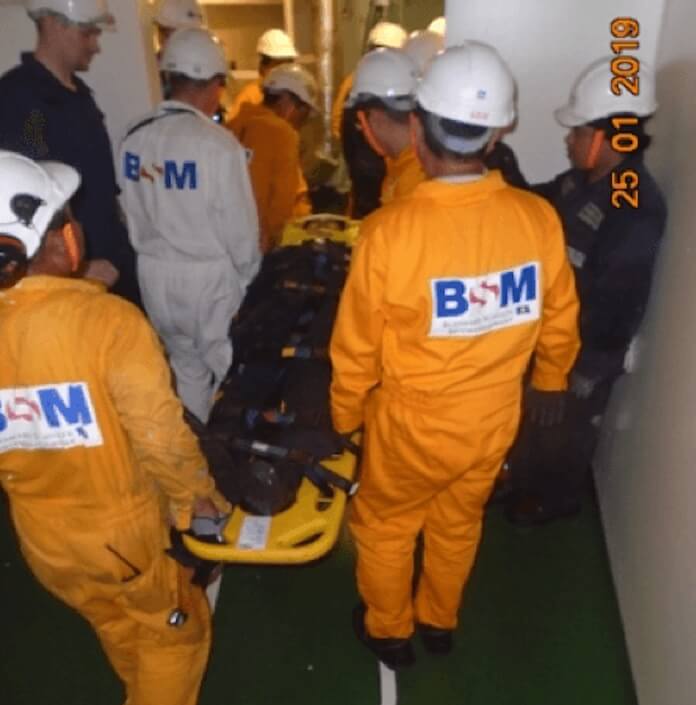

Regular drills help crew members to understand and anticipate the dangers of enclosed spaces, the rescue procedure and equipment are to be used. It gives valuable hands-on experience and the confidence needed in a real emergency. On completion, drills should be evaluated to identify improvements.
Enclosed space drills have been made mandatory since 1st January 2015 and should be carried out every two months. Every crew on board should be encouraged to speak up when they feel something is wrong.
If you do not understand seek clarification. Proper supervision and coaching are required for new joiners so that they understand and anticipate the dangers of enclosed spaces.
You may also like to read Procedure for cleaning Boiler on a ship.
Disclaimer: The authors’ views expressed in this article do not necessarily reflect the views of The Marine Learners. Data and charts, if used, in the article have been sourced from available information and have not been authenticated by any statutory authority. The author and The Marine Learners do not claim it to be accurate nor accept any responsibility for the same. The views constitute only the opinions and do not constitute any guidelines or recommendation on any course of action to be followed by the reader.
The article or images cannot be reproduced, copied, shared or used in any form without the permission of the author and The Marine Learners.










We believe that knowledge is power, and we’re committed to empowering our readers with the information and resources they need to succeed in the merchant navy industry.
Whether you’re looking for advice on career planning, news and analysis, or just want to connect with other aspiring merchant navy applicants, The Marine Learners is the place to be.